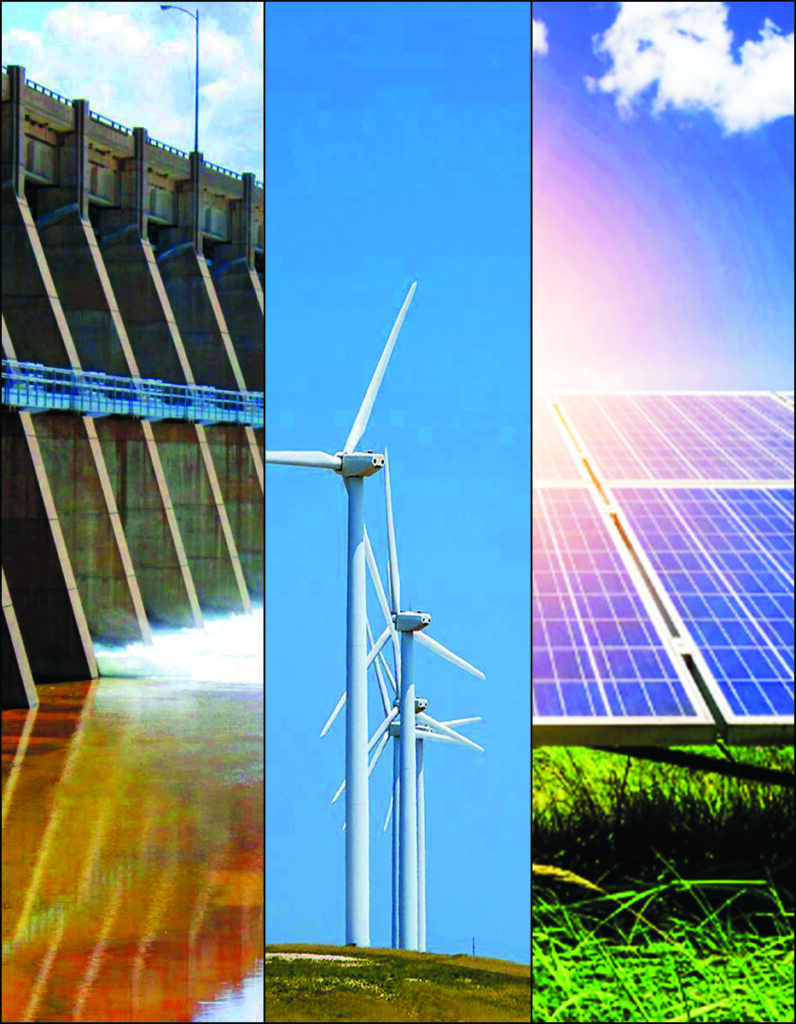
On Jan. 1, Moorhead becomes the first city in Minnesota, and one of the first in the Upper Midwest, to serve its customers with 100% carbon-free power. Moorhead Public Service energy manager Dennis Eisenbraun says that’s good for everyone — residential and commercial customers, the environment, and the business climate. (Photos/Nancy Hanson)
Nancy Edmonds Hanson
New Year’s Day 2021 flips the switch on a new era for electrical customers of Moorhead’s publicly owned utility. For the first time, every watt of power their homes and businesses consume will come from 100% carbon-free sources.
That may not seem epic in a community where the sight of smoke-belching power plants far in its rear-view mirror … but it marks a major achievement here in the “land of sky-blue waters.” The city is the first in the consortium of public utility companies that serves Minnesota, Iowa and the Dakotas to provide its customers with power that comes entirely from sources that consume no fossil fuel and release zero carbon dioxide into the atmosphere from their emissions.
Most scientists concur that those emissions are a major cause of the climate change that’s already being experienced here and around the globe.
“We’ve been getting closer,” says Dennis Eisenbraun, energy services manager for Moorhead Public Service. In 2019, 87% of the power purchased by the utility was considered carbon-free. A big drop in the price of renewable energy certificates in recent months, however, has allowed the city to push its clean-energy total over the top.
MPS is the first utility in the Missouri River Energy Services group to achieve that goal, with Barnesville running close behind. MRES is an energy distribution consortium of 61 public utilities, 23 in Minnesota, that purchases and distributes powers among its members. It has gone beyond “renewable” – a definition that includes such fuels as wood, which is considered “sustainable” when forests are managed and replanted but still emits carbon dioxide when burned – to “carbon-free,” entirely free of climate-defying emissions.
About half of Moorhead’s electricity has long been totally carbon-free. That’s the power that comes from the Western Area Power Administration, the federal agency that distributes electricity generated by Garrison Dam and the other hydroelectric plants on the Missouri River. “As the city has grown, we’ve had to look for supplemental sources,” Eisenbraun points out. MRES considers itself 84% carbon-free; most of the balance has come from the coal-powered Laramie River Station in Wyoming and two smaller natural gas and oil-fired plants in Iowa and South Dakota.
More carbon-free sources have been added to the list in recent months. Those include hydroelectric power from the new Red Rock Dam on the Des Moines River in Iowa, wind farms in Minnesota, North Dakota and Iowa, and a solar development near Pierre, South Dakota.
Moorhead satisfies the balance of its energy appetite through purchase of “renewable energy certificates,” or RECs. RECs (pronounced “rex”) are credits – somewhat like digital bitcoin currency – that permit utilities like MPS to purchase power off the electrical grid that is overproduced by wind farms and solar gardens. When they exceed their own usage, it’s uploaded and made available via the nationwide network of power distribution lines. That’s what MPS purchases: one-time usage rights to the amount of power it has purchased.
Last year, the energy manager explains, RECs cost the city one-half cent ($0.005 per kilowatt hour. The 264 residential and 11 commercial customers who signed up for the MRES Bright Energy Choices program paid a small monthly surcharge in 2020 to underwrite carbon-free purchases for the portion of their power that still came from non-renewable sources – about $1.65 a month.
For 2021, however, that has been turned on its head. “Thanks to excess wind production in other parts of the country, we’ve seen a significant price drop,” Eisenbraun reports. The price has gone from half a cent per kilowatt hour to just one-tenth of a cent ($0.001). That cut the prospective cost of buying RECs to go entirely carbon-free from $600,000 last year to $57,000 in 2021. The MPS commission voted in October to absorb that cost to make the entire city carbon-free with no rate increase to customers.
“If we can be 100% carbon-free without the price rising, everybody wins,” he emphasizes. “It’s good for our climate. It’s good for our customers, who have made it clear they favor environmentally friendly energy. And it’s potentially good for our business climate, too. Companies here will be able to say they produce their products with no cost to the environment.”


